Written by Industrial Stores Staff 09/03/2022

If you've been waiting for good weather to do some work outside, summer is the perfect time. But with high temperatures come risks that can make working outside less than ideal.
However, your skin is an incredible self-cooling system. It’s constantly working to maintain a balance between too much and too little heat loss. When you’re exposed to high temperatures, your first reaction is to sweat. This is the skin's way of trying to keep you cool.
Yet, when the temperature is so high that sweating doesn't help, you can become seriously overheated. This can lead to heat stroke, which can be fatal.
Fortunately, there are several ways to stay safe while working in the summer heat:
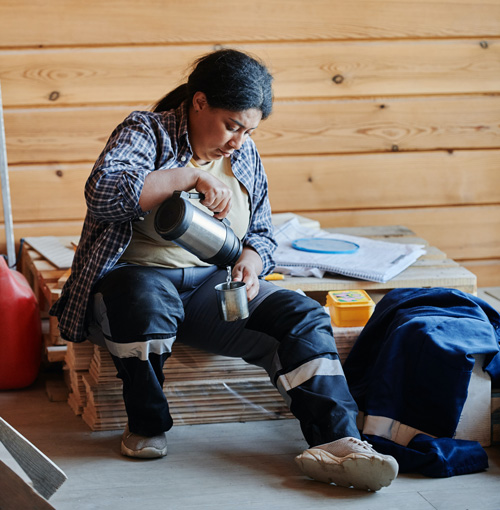
You've probably heard this a dozen times while working in the heat — hydrate, hydrate, hydrate. Your body needs fluids to function properly, and when you're sweating a lot, you need even more.
However, not all fluids are created equal. Some can actually make you more susceptible to heat illness. Caffeinated beverages like coffee, tea, and soda act as diuretics, meaning they make you lose more fluid than you take in. It's best to avoid them when working in the heat.
Alcohol has a similar effect. A hangover is not all you need to worry about after a night out — alcohol dehydrates you and can make it harder for your body to regulate its temperature.
So, what should you drink? The best choices are water and electrolyte-replenishing drinks like Gatorade and BIOSteel sports drinks.
Water is the best fluid to drink when working in the summer heat. It will help replenish the fluids you're losing through sweat and keep your body temperature down.
Have a bottle of water with you at all times, and drink small sips frequently throughout the day even if you're not thirsty. Thirst is often a sign that you're already dehydrated. Aim to drink about a cup (8 ounces) of water every 15 - 30 minutes.
Sports drinks can also be helpful, as they contain electrolytes like sodium and potassium that are lost through sweating. However, they can also be high in sugar and calories, so it's best to limit your intake. Choose a sugar-free or natural variety if possible.
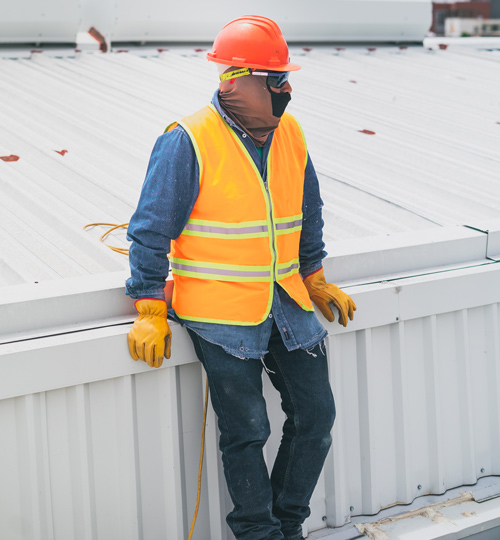
You might be tempted to wear as little clothing as possible when working in the summer heat. After all, the less you're wearing, the cooler you'll be, right?
Wrong. Wearing too little clothing can actually make you more susceptible to heat illness. When your skin is exposed to the air, it can quickly lose moisture and become dehydrated. It becomes less effective at regulating your body temperature.
It's best to dress in light-colored, loose-fitting clothing that will cover as much skin as possible. Cotton is a good fabric to choose, as it's breathable.
Polyester is lightweight and moisture wicking, but it doesn't allow your skin to breathe as well. When used as a blend with cotton, however, it can be a good choice.
Other good fabrics to wear while working in the heat include:
Avoid clothing that traps heat. This includes tight clothing, synthetic fabrics, and layers.
Wear emergency protective gear if required, but avoid clothing and equipment that will make you even hotter.
Consider wearing a hat or visor to protect your head and face from the sun. A wide-brimmed hat is ideal, as it will shade your neck and shoulders as well.
No matter how well your clothes cover your skin, it's important to apply sunscreen. Choose a broad spectrum sunscreen with an SPF of at least 15. Reapply every two hours, or more often if you're sweating a lot.
A good barrier cream, like the Calm Cream, can also be helpful. This type of cream forms a barrier on your skin that helps protect it from irritants. It can also help keep your skin hydrated.

If you're not used to working in the heat, it's best to start slowly. This practice is called acclimatization and it’s among the Occupational Safety and Health Administration (OSHA) heat safety recommendations.
The process of acclimatization can take up to two weeks. During this time, your body will adjust to the heat and become more efficient at regulating its temperature. You'll also sweat more profusely, which will help keep you cool.
When starting to work in the heat, OSHA recommends the following:
How long it takes you to fully acclimatize will depend on a number of factors, including:
OSHA recommends that new technicians and those returning from a prolonged absence should begin with 20% of the workload on the first day. They should then add no more than 20% each day until they reach their normal workload.
Even experienced technicians need to acclimatize. On excessively hot days, OSHA recommends that they start off with 50% of their normal workload and time spent outside. They can then increase this by 10% each day until they reach their normal routine.
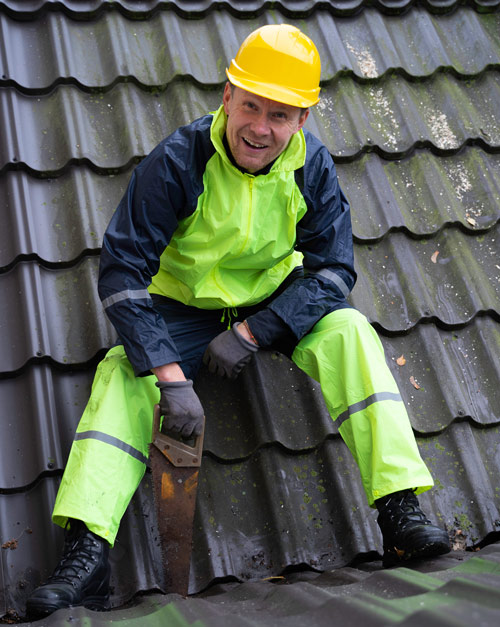
Working in the heat can be draining, both mentally and physically. It's important to take breaks to give your body a chance to recover.
OSHA recommends that outdoor workers take a break at least every two hours. During this time, they should:
Aside from taking breaks, technicians working in the heat should modify their work schedules to reduce their exposure to heat.
All physically demanding work should be scheduled for cooler times of the day, such as early morning or evening. Early start times must be paired with early finish times to avoid fatigue.
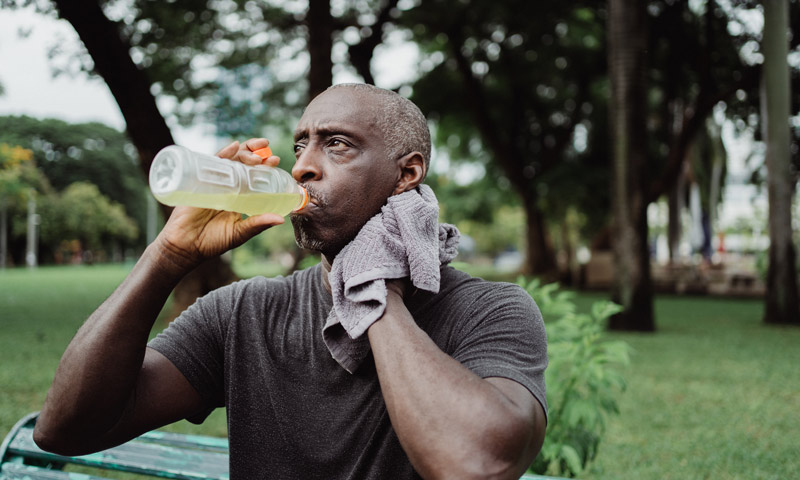
Heat illness refers to any health condition that's brought on by exposure to hot conditions. It includes:
Heat stroke is the most serious type of heat illness. It occurs when the body's temperature rises to 106°F or higher within 10 to 15 minutes. Symptoms include confusion, delusions, fainting, seizures, and coma.
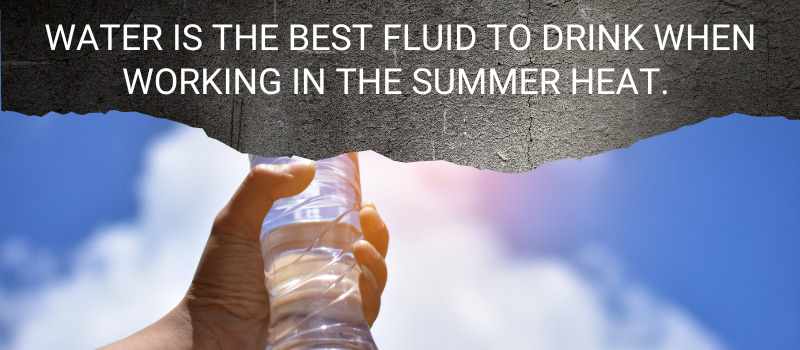
Heat exhaustion occurs when the body has lost an excessive amount of water and salt through excessive sweating. Symptoms include heavy sweating, weakness, headache, nausea, and vomiting.
Heat cramps occur when the body has lost excessive salts through sweating. Low salt levels in muscles lead to intense cramping. Symptoms include muscle spasms, pain, and tenderness.
A heat rash appears as red bumps on the skin. It's caused by sweating and can happen at any temperature. Sweat irritates the skin especially on the neck, upper chest, groin, and elbows.
If you experience any of these heat illness symptoms, stop working immediately and move to a cool, shady area. Drink plenty of fluids and seek medical attention if symptoms don't improve.
OSHA recommends using a buddy system to monitor for signs of heat illness. This involves pairing up workers and having them check in with each other throughout the day. If a worker shows signs of heat illness, their buddy should call for medical help.
If you're working alone, it helps to set up a regular check-in schedule with someone who can provide assistance if needed.
Technicians working outside in summer need to take extra precautions to avoid heat illness. These include dressing appropriately, acclimatizing to the heat, taking breaks, and monitoring for symptoms. By following these tips, technicians can stay safe and healthy all summer long.
Share on Facebook: